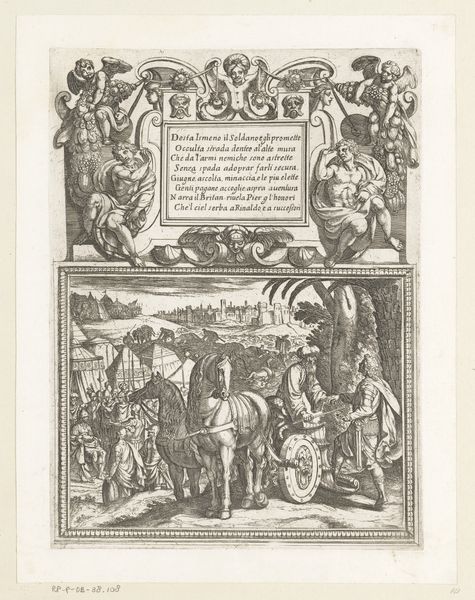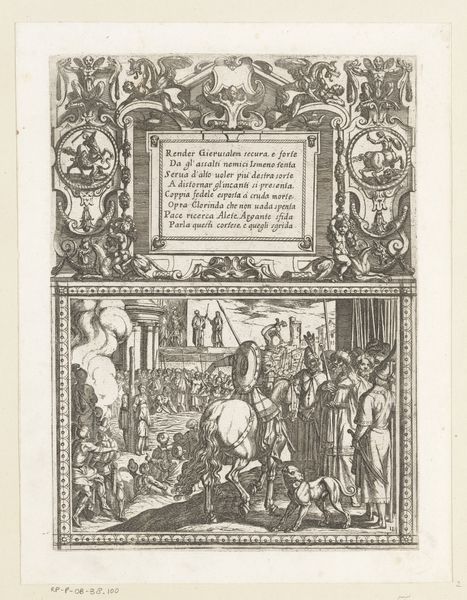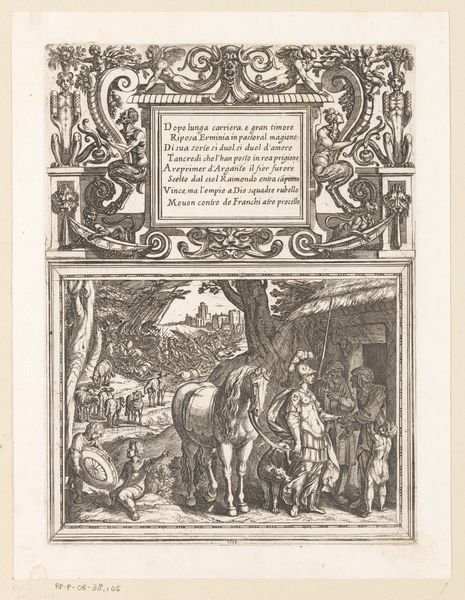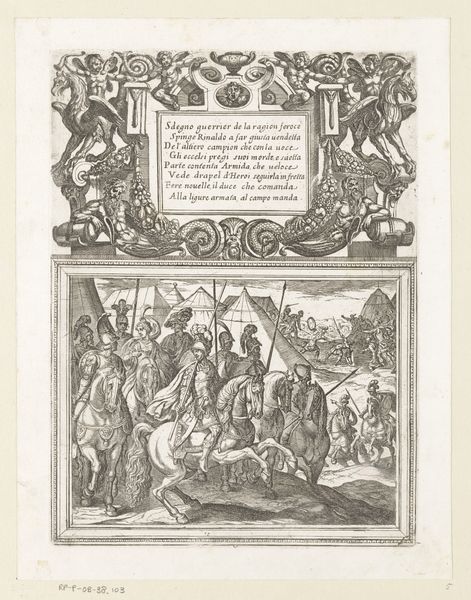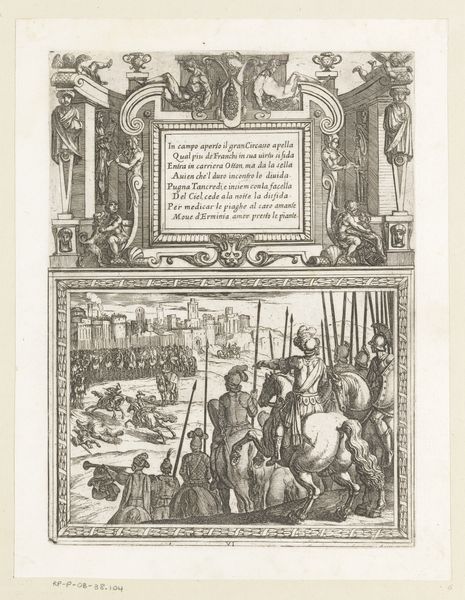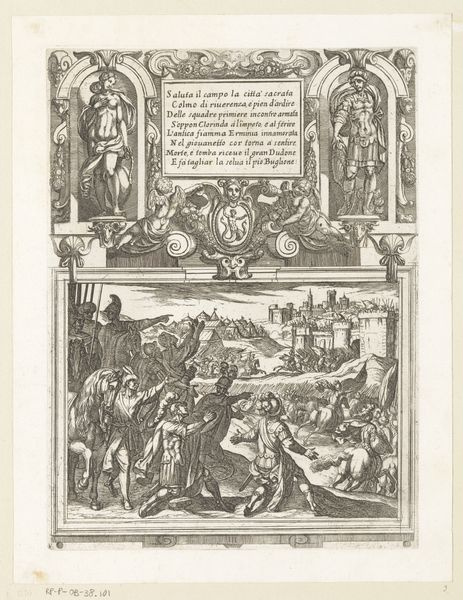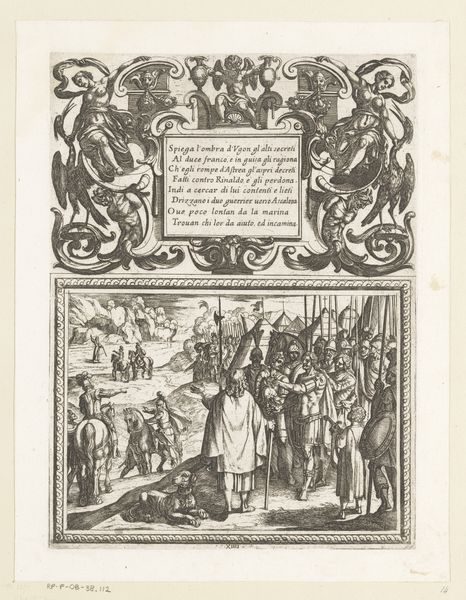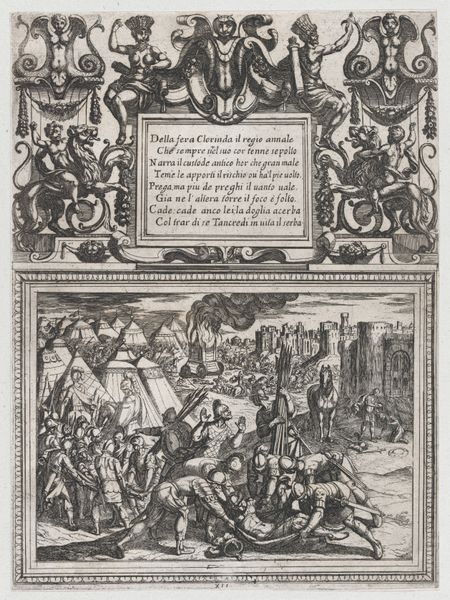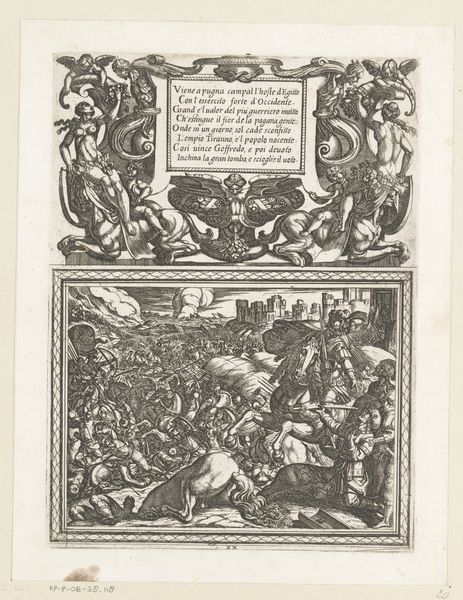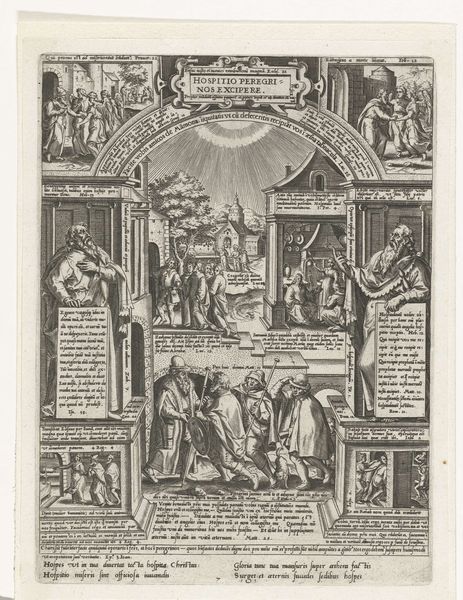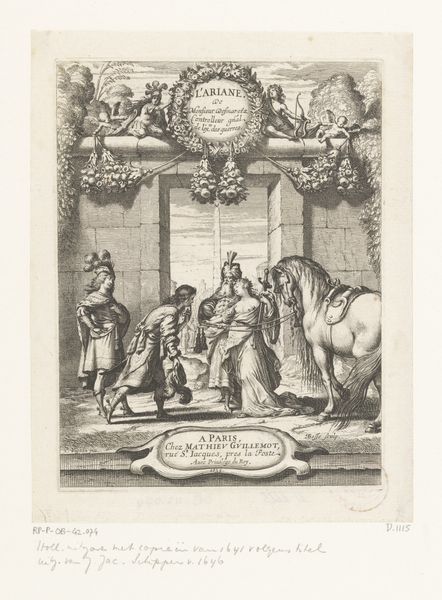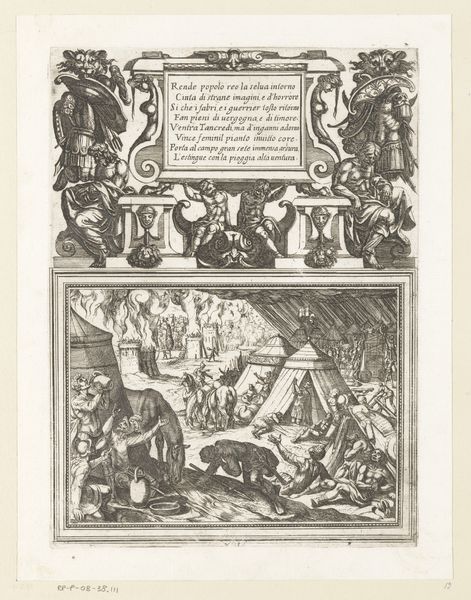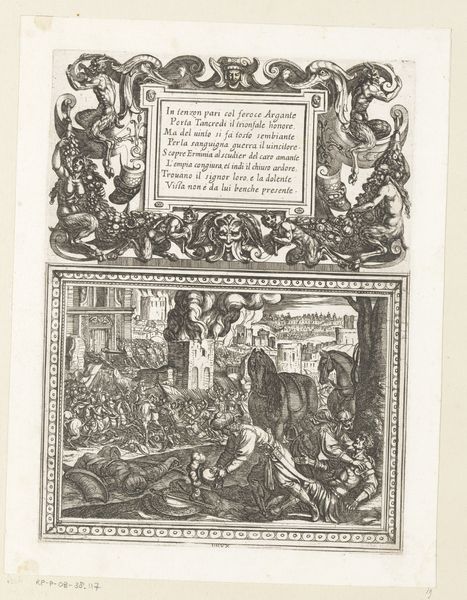
Illustratie bij Canto I van Tasso's 'Gerusalemme Liberata' 1565 - 1630
0:00
0:00
antoniotempesta
Rijksmuseum
print, engraving
#
baroque
# print
#
old engraving style
#
landscape
#
figuration
#
line
#
history-painting
#
italian-renaissance
#
engraving
Dimensions: height 275 mm, width 204 mm
Copyright: Rijks Museum: Open Domain
Antonio Tempesta created this illustration to Canto I of Tasso's 'Gerusalemme Liberata' with ink on paper. The method of production here is printmaking, specifically engraving. The artist would have used a tool called a burin to manually carve lines into a metal plate, which was then inked and pressed onto paper to create this image. The crisp precision of the lines, and the way they build up to create tone and shadow, reveal Tempesta's skill with the burin. Engravings like this were a key way of disseminating images in early modern Europe, allowing stories and ideas to circulate widely. This artwork has been produced for dissemination and consumption, thus we can appreciate it for its own aesthetic qualities but also as a product of a specific cultural and economic moment. The labor-intensive process of engraving, requiring significant training, reflects a specific hierarchy of skill and production. These kinds of prints played a crucial role in shaping visual culture at the time.
Comments
No comments
Be the first to comment and join the conversation on the ultimate creative platform.
